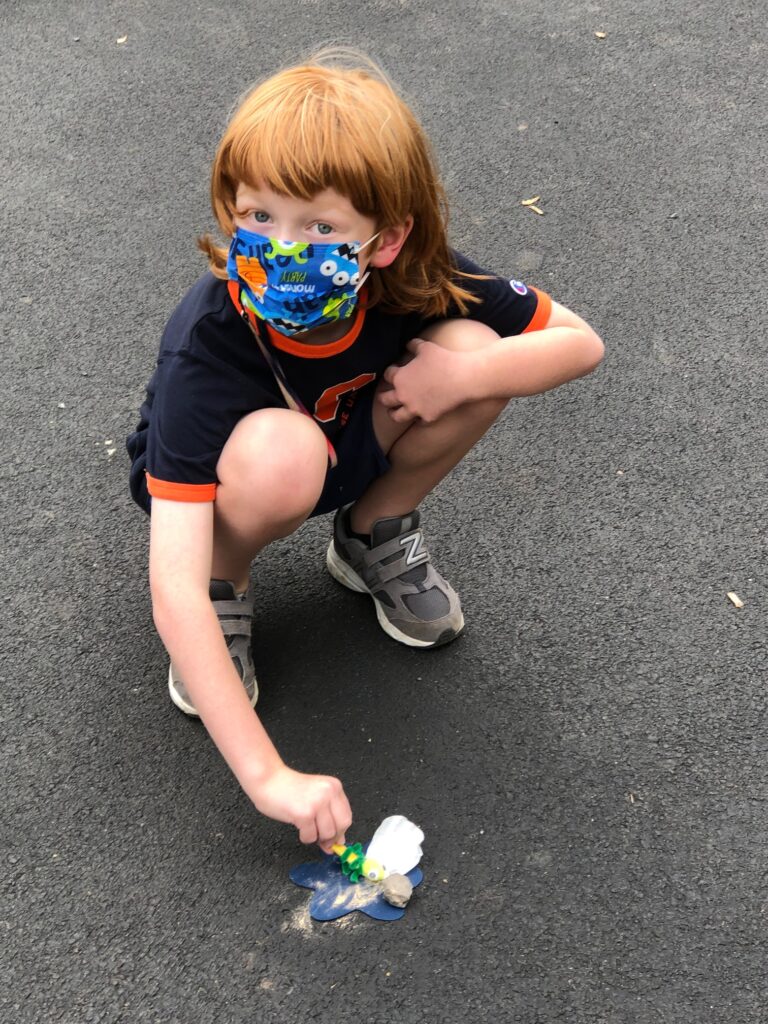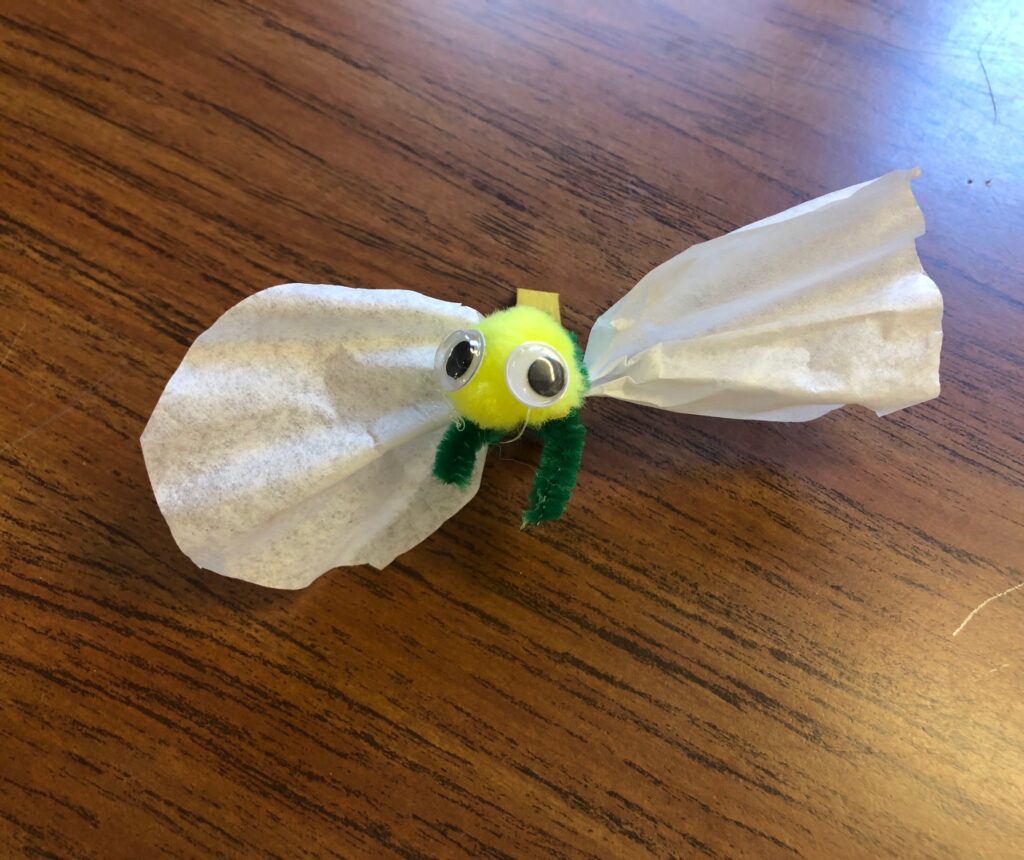We completed a unit study at the start of school on The Life Cycle of the Butterfly and Moth. Children learned about eggs, caterpillars, their metamorphosis within a cocoon or chrysalis, and their eventual emergence as a butterfly or moth.
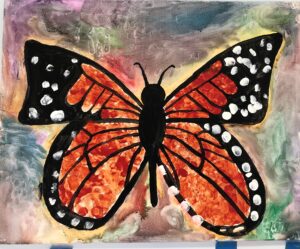
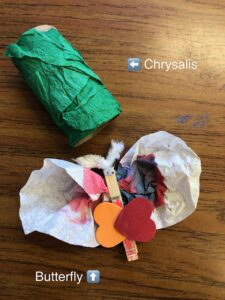
We were able to watch the life cycle play out with four Monarch caterpillars that we fed milkweed to until they formed their chrysalis and then emerged a couple of weeks later. Each child had a chance to sit in a screened tent with the butterflies and feed them before releasing them. We learned about the path to Mexico they will be taking, and how their children, grandchildren and great grandchildren will make the trip in increments back to our area next year.
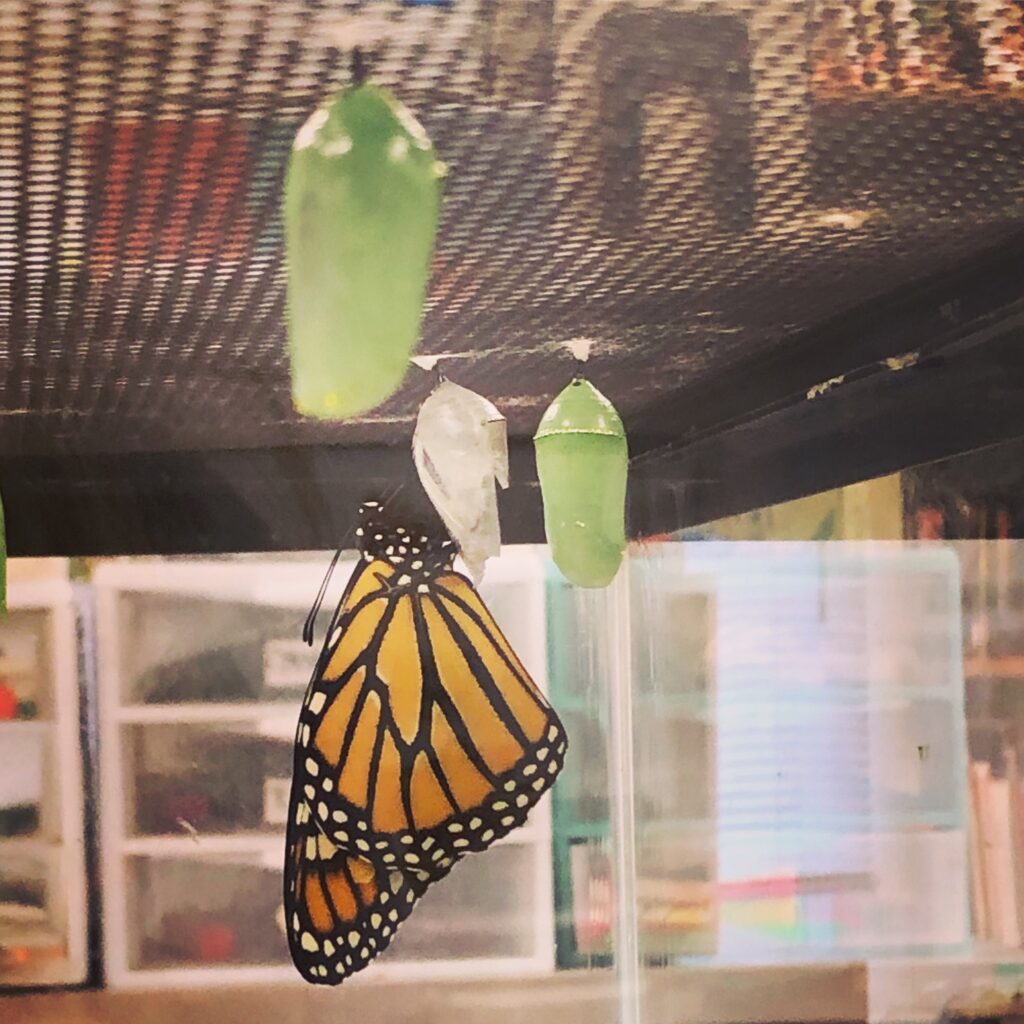
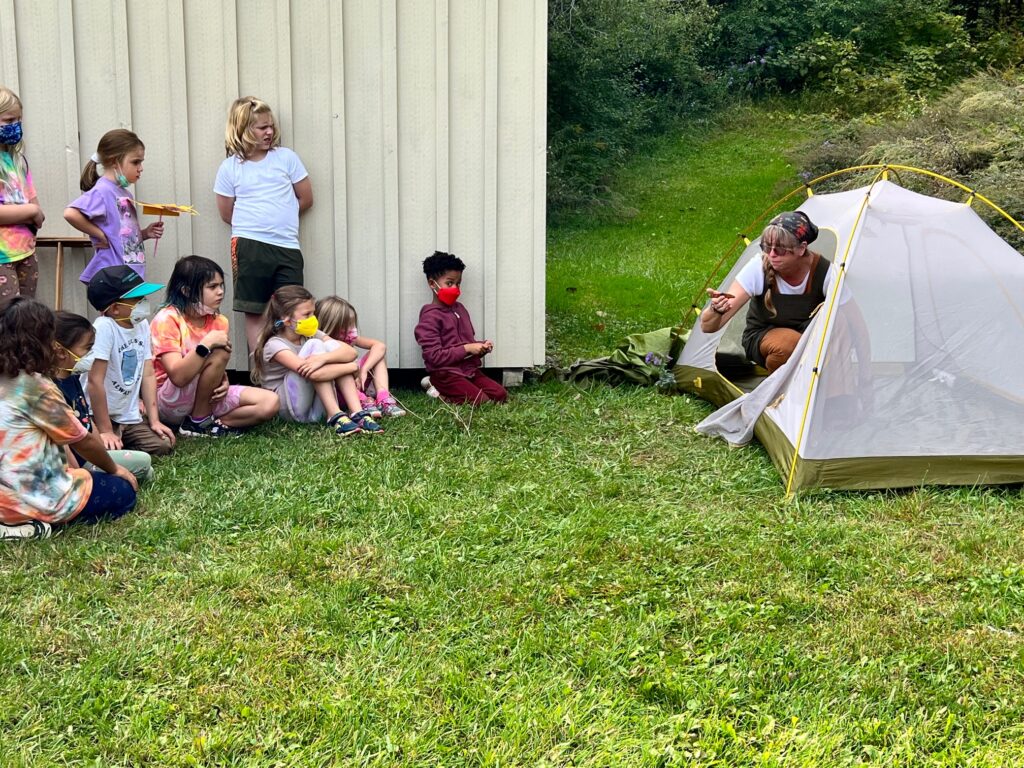
We learned about the composition of their body and the make-up of their wings. We observed the wings under a microscope. We learned about the defenses of caterpillars, butterflies and moths. We learned about how camouflage, mimicry, diet toxins, flight patterns, and warning coloration help keep them safe. We learned how to tell the differences between moths and butterflies and even how to tell whether the monarch butterflies we had were boys or girls. We took a poll of the kids’ predictions. We had three girls and one boy. Children did a STEM experiment on creating a straw to mimic the long proboscis of the butterfly and whether they could drink from it.
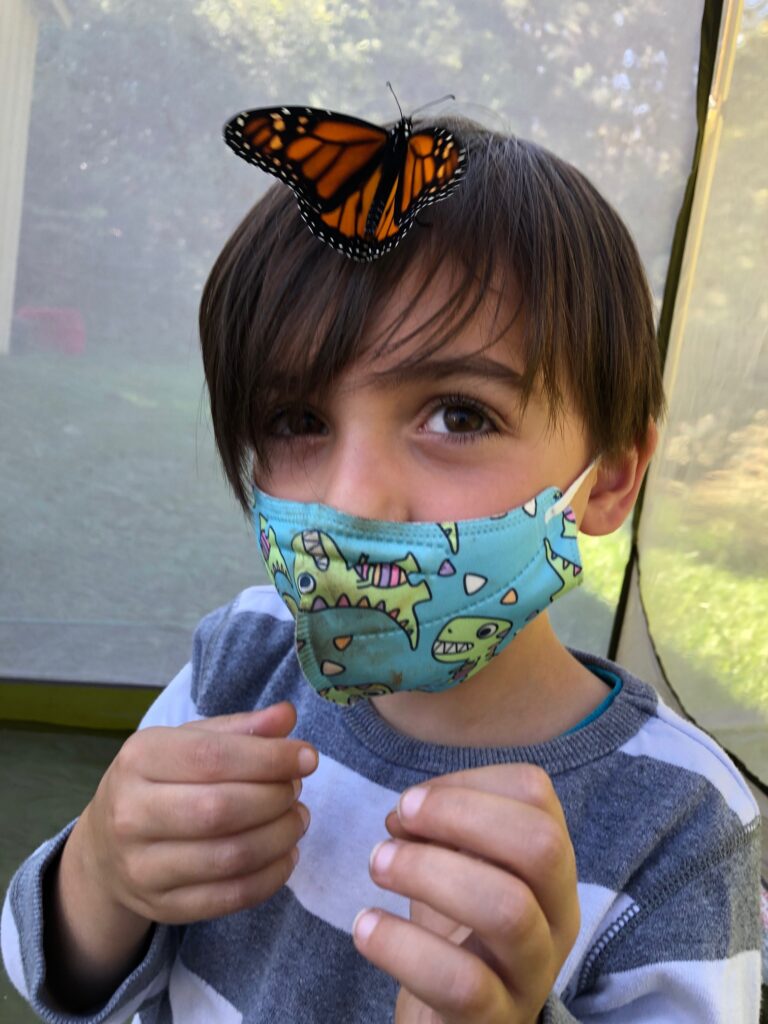
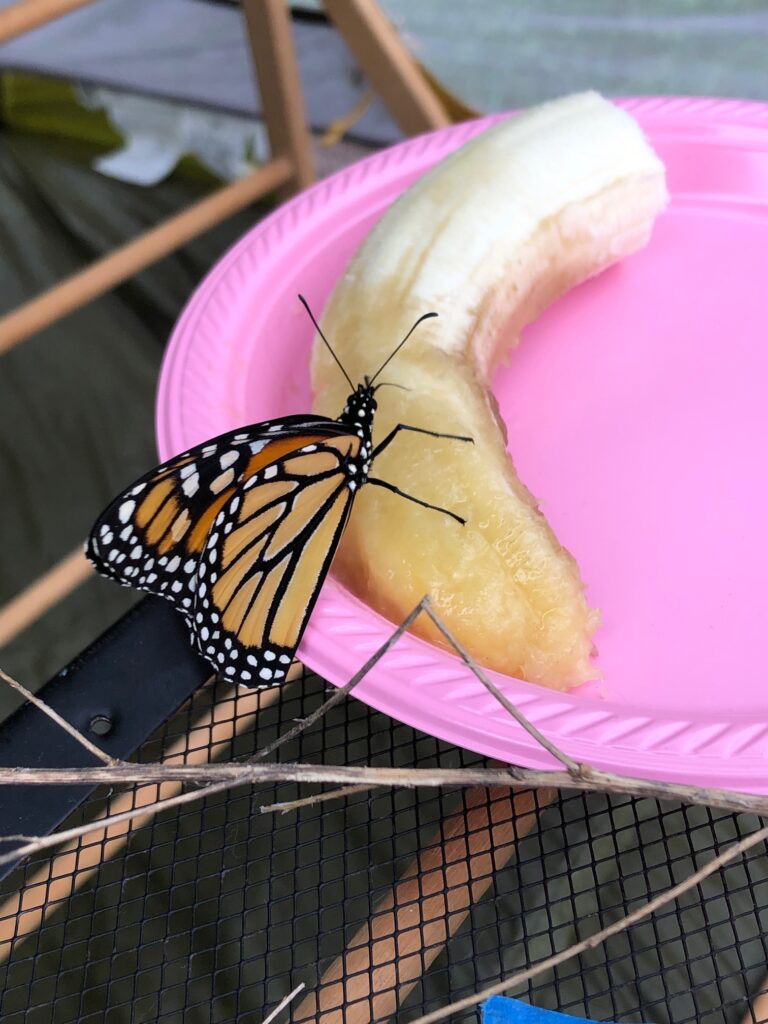
We finished the unit with a smaller unit on bees. We started the unit on identifying the differences between bees, wasps, and hornets and the role bees have on the environment. We then focused on the honeybee. The children were able to see a bee tray from a beehive from a beekeeper and we were able to try fresh honeycomb. We discussed the roles within a bee community and the differences between workers, the queen and drone bees. We learned about pollination and as a segway into our next unit study on plants. The students did a STEM experiment where we created bees in art and then took those bees and pollinated flowers (using mac and cheese powder as pollen) and saw how the pollen was transferred to the various flowers.
